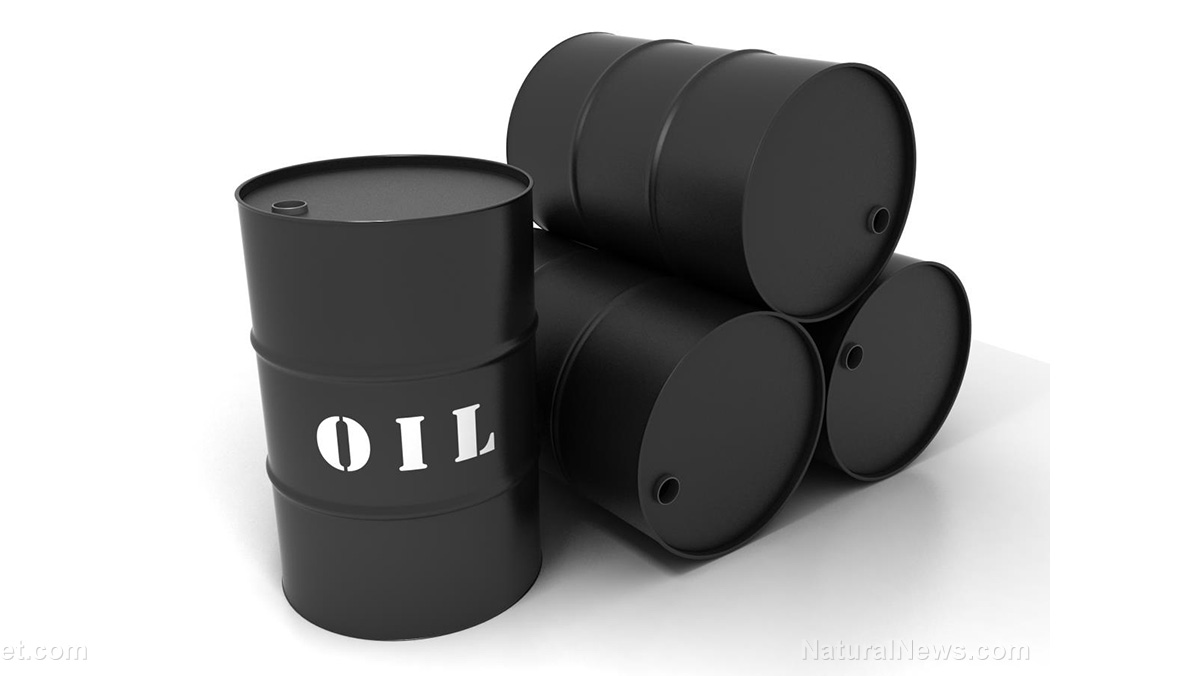Global oil glut looms as production surges while demand stagnates: IEA warns of 2026 oversupply
10/16/2025 / By Willow Tohi

- IEA forecasts a 4 million barrel-per-day oil surplus by 2026 as production outpaces sluggish demand growth.
- OPEC+ and non-OPEC producers, led by the U.S., Brazil and Canada, drive supply increases, while electrification and weak economies curb consumption.
- Middle East exports surged in September, pushing oil-on-water stocks to pandemic-era highs.
- Demand growth projections slashed—just 700,000 barrels per day expected in 2025 and 2026, far below historical averages.
- Geopolitical risks persist, including Russian refinery attacks and sanctions, but may not offset the looming supply glut.
The International Energy Agency (IEA) issued a stark warning this week: the world is heading toward a massive oil surplus by 2026, with production growth far outstripping demand. The Paris-based agency, which advises industrialized nations on energy policy, predicts a glut of 4 million barrels per day (bpd)—a scenario that could destabilize prices, strain producer economies and reshape global energy strategies.
The forecast comes amid rising U.S. shale output, OPEC+ supply expansions and stagnant demand due to economic headwinds and the accelerating shift toward electric vehicles (EVs). While geopolitical tensions—including attacks on Russian refineries and escalating sanctions—have kept markets volatile, the IEA suggests these disruptions may not be enough to counterbalance the flood of new crude hitting the market.
Production boom meets demand slowdown
The IEA projects global oil supply will grow by 3 million bpd in 2025, reaching 106.1 million bpd, followed by another 2.4 million bpd increase in 2026. Non-OPEC+ nations—primarily the U.S., Brazil, Canada, Guyana and Argentina—will account for 52 percent of this growth, reinforcing America’s dominance as the world’s top producer. Meanwhile, OPEC+ (including Russia and Saudi Arabia) plans to boost output by 1.4 million bpd in 2025 and 1.2 million bpd in 2026.
Yet demand remains anemic. The IEA slashed its 2025-2026 growth forecast to just 700,000 bpd annually, citing economic stagnation, efficiency gains in transportation and surging EV adoption. This stands in sharp contrast to OPEC’s more optimistic 1.2 million bpd demand growth estimate for 2026—a discrepancy highlighting the deepening divide between producers and energy analysts.
Oil on water: A looming inventory crisis
One of the most alarming trends is the explosion of oil stored at sea. In September alone, 102 million barrels were added to floating storage—the largest monthly increase since the COVID-19 pandemic. Middle Eastern exports, combined with strong flows from the Americas, pushed oil-on-water stocks to a 2.5-year high, signaling that the market is struggling to absorb excess supply.
Historically, such inventory buildups precede price collapses—as seen in 2014-2016 and 2020, when oil briefly traded at negative prices. While Brent crude remains stable near $64 per barrel, analysts warn that without production cuts or a demand rebound, prices could plummet as stored crude floods the market.
Geopolitical wildcards: Can they offset the glut?
Despite the bearish outlook, risks remain. Russian refinery attacks have disrupted 500,000 bpd of processing capacity, tightening diesel and jet fuel supplies. Meanwhile, Iranian sanctions and Venezuelan production volatility could further strain global balances.
However, the IEA cautions that these disruptions may only provide short-term price support. With U.S. shale resilience and OPEC+ discipline weakening, the market appears poised for a prolonged period of oversupply—raising questions about whether producers will adjust before prices spiral downward.
A market at a crossroads
The IEA’s latest report paints a sobering picture: The world is drowning in oil, and demand isn’t keeping up. As producers ramp up output and economies stagnate, the risk of another price collapse looms large—echoing past crises that devastated energy-dependent nations.
For consumers, this could mean lower fuel costs in the short term. But for oil-reliant economies—from Saudi Arabia to Texas—the stakes are far higher. The coming months will test whether OPEC+ can maintain cohesion, whether U.S. shale producers will slow drilling, and whether global demand can defy expectations.
Sources for this article include:
Submit a correction >>
Tagged Under:
bubble, Collapse, economics, economy, electric vehicles, energy supply, global supply, Green New Deal, green tyranny, International Energy Agency, market crash, new energy report, Oil and gas, oil drilling, OPEC, power, Prediction, price collapse, risk, supply chain
This article may contain statements that reflect the opinion of the author
RECENT NEWS & ARTICLES
COPYRIGHT © 2017 PROPHECY NEWS




















